5 Common Traveler’s Infections and How to Cope
Are you ready to get gross? Like, really gross?
You might want to hold off on reading this article if you’re squeamish—but then again, you might not. That’s because this piece could really help you out once you decide to leave the land of 9-5 behind you and set off on your journey ‘round the world.
When you do decide to travel, you’ll find new challenges everywhere you go. New and exciting diseases await you, some of which you’ve never even heard of but seem to contract immediately upon your departure. It’s important to know how to prepare for and face these problems head on, especially when you don’t have a doctor handy to help out. In some cases, it could mean the difference between life and death. Not all cases, but some.
What to Expect Here, Buddy
This is a fun and informational post. There are very few cool pictures because I didn’t take that many pictures of my diseases (did you really want me too?), and some are not photographable anyways. Instead of that, expect to come away with some understanding of how to prepare for these illnesses and treat yourself when you invariably catch them—because at some point, you will. At least one. I’ll also be sharing my personal anecdotes, because I have experienced every single one of these sicknesses. This is a long post, but it’s worth it.

This is an enticing and beautiful picture of Parque Tayrona in Colombia, but that's not what we're here to discuss.
Why This Is Important
This is a different sort of post than I usually write. Normally I’m all about travel guides, full of badass pictures of yours truly doing badass things. But it’s come to my attention that many people who decide to travel to the places I describe will set off blissfully and woefully unprepared (as was I) against even common illnesses. And that sucks. Nobody wants to be stuck in the tent all day with a mysterious rash or unexplained diarrhea—you want to be able to get rid of it STAT.
In your home, this is much easier to do. You can lay low, rest up, do whatever you like. But if you’re traveling—especially on the cheap—you might not even have a bed to recuperate in. Your immune system won’t be in top-top shape, and sometimes something which normally isn’t a big deal can turn into a big deal, quick. That’s why you have to nip this shit in the bud.
So, who am I? What right do I have to be discussing this? Am I a doctor? No, I am not a doctor. But I do have plenty of experience warding off foreign diseases, and saving myself from potentially life-threatening situations. These are the sicknesses which have caused me the biggest headache over the years, and here’s how to prepare for them and treat them properly.
1. Lice
Let’s start off with the least-threatening, shall we? It’s not an infection so much as an infestation. But it still sucks. I’ll tell you a story. Once upon a time, I had hair like a beautiful mermaid. It was long and flowing and absolutely stunning. Everyone said so. And then I travelled to the magical land of Morocco, which is totally paradisiacal, but does not employ the same methods of cleanliness as does the southern United States. Nor do they have the same attitude about lice in general. So when I caught lice, I wasn’t surprised so much as disappointed—after all, I had such beautiful hair. But I could save it, right?

Spoiler alert: The hair didn't make it.
Wrong. “A little lice won’t kill you” is pretty much the pinnacle of Moroccan wisdom (also Colombia and Ecuador, where I caught additional lice) when it comes to these blood sucking creatures, and it sucks to hear that if you’ve grown up in the same Purell-soaked western society I have.
I, alas, was too late in my mission to Stop the Lice. I shaved off my hair, entering a new era of sad mohawkery. How can you avoid this? Especially if you had gorgeous hair (like I did, jussayin) you don’t want to lose it. You might anyway, because lice spread quicker than wildfire. But if you know you’re in a country where there’s lots of lice, assume everyone has them.

Some would consider this failure, but I saw it as a tentative victory.
I’m not trying to be rude here, but it’s a safe assumption. Bring a lice comb with you, and ask others (preferably your friends, but you can ask strangers also) to check your hair for these foul beasts and pick them out manually with the comb.
If you can’t find a lice-killing shampoo, you probably won’t be able to rid yourself entirely of lice, especially if you have long hair. Does that mean you should pack a bottle of lice-killing shampoo? I would say no. You don’t want to lug that shit around with you across the globe. It will spill in your backpack, covering everything in a gooey haze. You will wash your things, and you will get lice anyway, and you will curse the day you were born.
But definitely bring a packet or two of lice-killing shampoo. You don’t often find these, but you can buy them on amazon—they look like little ketchup packets, they come with a comb, and they won’t spill because they don’t have a cap. They also weigh about 2 ounces, so they don’t add any extra weight to your pack or take away a lot of volume. Problem solved.
2. Fungal Infection
What a doozy! If you’re traveling to tropical or even sub-tropical climes, this can be a major problem. It can also be a problem in normal climes, especially if your hygiene is lacking—which on the road, it probably is. Mine certainly is. It’s nothing to be ashamed of, it’s just life. Traveling cheap does have its disadvantages.
Fungal infection can manifest in numerous ways—jock itch, ringworm, mysterious blotches—I’ve had them all. In fact, I had one infection for two years. That’s not a typo, it’s just my disgusting life. That’s right, I was covered in fungus. I’m still not even sure what kind it was, but it manifested as soon as I entered South America and didn’t go away until I put Clotrimazole on it. Why did I wait so long, you ask?
I didn’t think it was a big deal. I saw a few patches and thought they were sunspots. I ignored them. A few more showed up. A few showed up on my partner. All of a sudden, we were covered head to toe with fungus, and it was too late. I might even still have some, that’s how bad it was.
If you look closely at this black-and-white photograph, you'll see that I'm covered in white spots on the neck, shoulders, and face. That's fungus, folks! All over my face!
If you look at the underside of my partner's arm, you'll see a nice fresh crop of fungus sprouting up.
We tried home-made hippie remedies like vinegar, tea-tree oil, and vitamin E oil. Don’t be like us. Buy yourself a little tube of Clotrimazole, which is an all-purpose fungus killer. And it is a strong one. You can buy it over the counter at the pharmacy in any country, though the strength may vary depending on which country you’re from. Bring it with you everywhere you go.
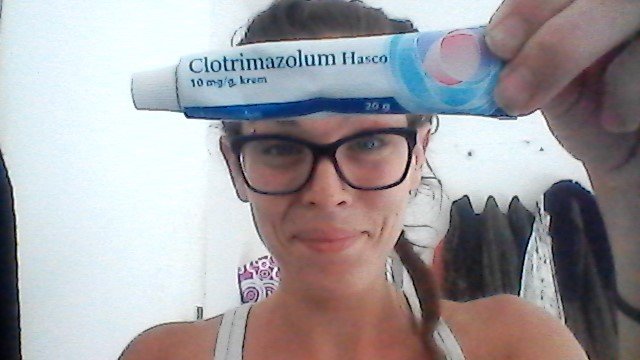
Here is a picture of Clotrimazole, in case you want to look at that.
Clotrimazole has successfully gotten rid of every single fungal infection I’ve ever had, including ringworm and yeast infection. That’s right, ladies. You can put it in your vagina. It isn’t pretty, but it does work. Instead of bringing a bunch of different remedies that don’t work, just bring Clotrimazole.
3. Staphylococcus
I and nearly everyone I know has been infected with staph. I was lucky, and was able to kill it with a cream I bought at the pharmacy. One gentleman was not so lucky, and his infection progressed to an abscess. After several attempts on my part to drain the infected wound (I’ll never forget that foul smell), he eventually had to be admitted to the hospital for an IV of antibiotics and a good stern talking-to about sepsis. He was just a few hours away from losing his leg.
This is one incredibly dangerous infection. You shouldn’t take it lightly. It isn’t a fungal infection, so don’t try to put Clotrimazole on it. It’s a bacterial infection, so you need to use a topical antibiotic to treat it. Depending on which strain of staph you have, an over-the-counter triple antibiotic cream could work for you. But it might not. You could need a prescription strength cream or an antibiotic in pill form.
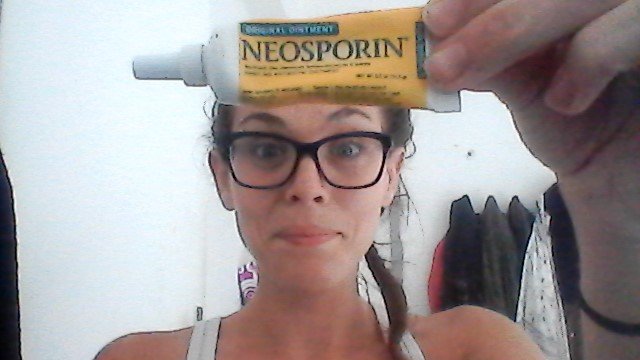
Smear some Neosporin on that bitch and see what happens .
Staph is quite difficult to prevent, since the bacteria staphylococcus lives on each one of us. On our fingers, in our noses, on our faces—it’s only when the staph actually gets inside of us that we have a problem. This happens most commonly through a wound, which becomes infected—so keep your shit clean. Keep it covered.
The difficult thing about staph is that it comes in so many forms (over 30 different strains of staph cause infection!). It’s the most versatile disease out there. You might see little blisters, a spattering of pimples, or a gaping, pus-filled sore. Different strains respond to different methods of treatment—as my staph was cured up by a cream, his formed an abscess and had to be dealt with in a different manner.
It also appears anywhere on the body, including gross places like the genitals and butt cheeks. I’ve had it in quite a few compromising places myself. You have to keep it clean, disinfected, and dry when you have it. If it doesn’t get better, or if it gets worse, you need to go see a doctor and get an antibiotic prescription or just buy on in a pharmacy if you’re in one of those awesome places that sells antibiotics OTC. It’s a good idea to travel with a general antibiotic anyway, which will usually clear up your staph unless it’s a resistant strain.
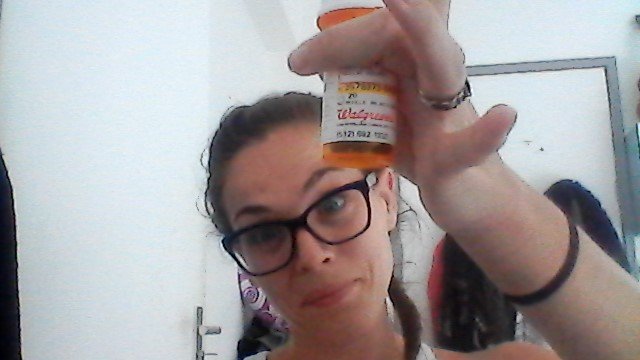
Get yourself a general antibiotic from the doctor before you hit the road.
Remember, staph is highly contagious. Don’t rub your infected limbs on your friends as a joke. If your partner has staph, employ reasonable measures to ensure they don’t give it to you. No sex, no cuddling, etc. Normally staph isn’t a huge deal, but it can get nasty—and dangerous, so keep an eye out for it.
4. Urinary Tract Infection
This is one for the ladies, but men shouldn’t get cocky. They are also susceptible, albeit less so. And they’re lucky. Nobody wants to feel as though their vagina is on fire, but UTI does just that. Burning, itching, that terrible feeling like you need to pee all the time—the list of less-than-tempting symptoms goes on.
However, those symptoms are a walk in the park compared to what happens if you ignore a UTI and hope it will just go away. An unchecked infection could travel up into the bladder and kidneys, potentially putting you through enormous pain before killing you.
However, UTIs don’t have to be dangerous. It’s an incredibly common infection, after all. If you’ve had recurring ones your whole life, you already know what to do and you won’t be bothered. Just take your supplies on the road. If you’ve never had one (you lucky bird), you still might. Take it from me. 25 years of UTI-free living, them BAM—kidney infection. Hospital. Don’t be like me.
So how can you treat one of these on the road? Like all diseases, the best medicine is prevention. In order to prevent it, you have to understand how it works. So let’s have a lesson: 99% of the time, UTI is caused by E. coli bacteria (that’s from poo, everyone) becoming lodged in the urethra. Once they get there, they begin sticking their disgusting little bacteria-fingers into your most holy of channels. They climb like lampreys up your spigot, causing infection and nasty symptoms.
But they are incredibly easy to prevent in most women. Keep your area clean, drink a lot of water to flush out bacteria, and most of all, pee after sex. Generally speaking, sex is the activity which is most likely to give you a UTI, because of all the stuff going on down there. It’s easy to transfer bacteria on accident. Peeing after sex flushes the bacteria out before they have a chance to really stick, decreasing your chances of UTI astronomically.
BUT. What if you do all of this, and STILL get UTI? Cranberry juice won’t help you, ladies and gentlemen. There is evidence that suggests taking concentrated cranberry pills may help you, because they contain A-type proanthocyanidins. This stuff prevents the bacteria from sticking to your down-under walls. But you’re much better off using a concentrated form of these proanthocyanidins, which is contained in a sugary supplement called D-mannose.

Get yourself some of this stuff for UTI.
Get yourself some D-mannose powder or pills, and carry them with you wherever you go. As soon as you start feeling the symptoms of UTI, go ahead and take them. If you start early enough, they stand a good chance of getting rid of your problem. If they don’t, you have to take antibiotics. Try not to take the antibiotic until it’s absolutely necessary. They weaken your system and other infections (like staph) are more likely to become resistant and take hold of you.
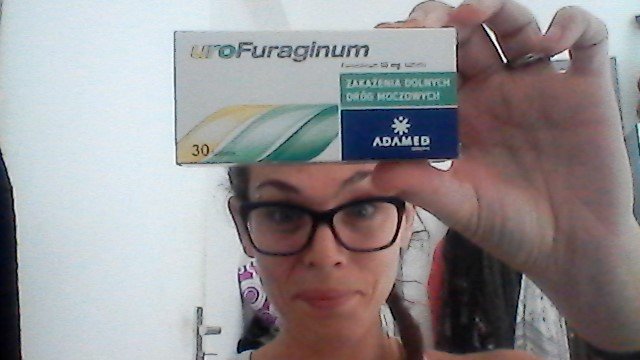
If you can get some, get some. These little pills do wonders against UTI on the road.
It’s worth mentioning one other OTC medicine which will most likely clear up the problem, if you can get ahold of it. It’s called UroFuraginum. If you’re in Poland, it’s readily available. It’s also available in Polish shops throughout Europe, and you should be able to buy it online. The active ingredient in it (furaginum) structurally mimics a common antibiotic used to treat UTI (nitrofurantoin). Try and get this stuff, because it works just like the antibiotic without a prescription. Remember, if you’re in the sticks and you get a UTI, you may not have enough time to get to a doctor. So having stuff like this is important.
5. Mystery Diarrhea
Oh, mystery diarrhea. This is perhaps the most common traveler’s sickness of them all, and is most likely caused by the same bacteria that invade your urinary tract—E. coli. Wait. That’s poop, right? Does that mean you’re eating poop? Absolutely. You are totally eating poop. To misquote everyone’s favorite billionaire heiress, stop eating poop. It’s not that tasty.
But seriously, poop gets on hands, which go unwashed, then touch your food. You’ll usually get this after eating at delicious but unhygienic restaurants or food stands. You can also get it from unfiltered water. Bring your fucking LifeStraw, kids. This is not a joke. depending on your constitution, you’ll usually get better in a few days. Generally speaking, you can wait out this type of thing. That’s what I’ve always done. This illness usually isn’t that dangerous. the worst thing about it is the potential for dehydration.
Make sure to drink plenty of fluids and eat many salty snacks, because you’ll lose a lot of liquid and salt. Get as many electrolytes as possible through juice, and rest up for a few days. When you have diarrhea, it’s great if you have access to a toilet. If you don’t have access to a toilet, dig a sanitary latrine as far away from your campsite as you can stand. If your diarrhea persists beyond four or five days, get your hands on an antibiotic like Ciprofloxin. Even taking it for one or two days will get you straightened out.
Take Away: Bring These Necessities to Fight Disease on the Road
So, let’s recap. What exactly do you need to bring with you on your journeys? Take these key items to save yourself a ton of headache, backache, stomachache, skin-ache (is that a thing?), and all sorts of other aches.
• Lice shampoo in easy-to-store lightweight packets for killing lice where they stand.
• Lice comb to remove their vanquished corpses from your hair.
• Clotrimazole for any and every fungal infection under the tropical sun.
• Triple-antibiotic cream to fight Staphylococcus infection (it helps for minor scrapes and burns, too).
• UroFuraginum for UTI if you can get your paws on it.
• D-mannose if you can’t find any UroFuraginum.
• General antibiotic like Ciprofloxin or Amoxicillin. Ask your doctor to prescribe one before you go.
• LifeStraw to filter your water, so you stop inadvertently drinking poo.
Don’t want to lug all that stuff around with you? Everything on this list combined shouldn’t weigh more than a kilo. That’s part of the reason this is the traveler’s list, and not the sitting-at-home-with-access-to-plenty-of-storage list.
So, travel smart. Prepare yourself. Hopefully you won’t need any of this stuff, but you can rest easy knowing that you have it.

Since you read all the way to the end, have a beach panoramic. As always, all these pictures are mine.

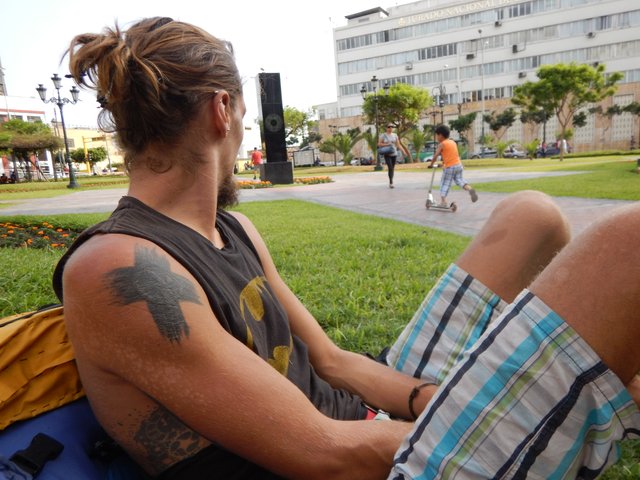
I upvoted your post.
Best regards,
@Council
Posted using https://Steeming.com condenser site.
Luckily none of this happened to us, of course we had some diarrhea but next day everything was fine. OK, in Panama we got bitten by bed bugs this was the worse experience we had.
Oh dude bedbugs are the WORST. I think I'm going to write about them in a separate post though lol
Congratulations! Your high quality-travel content was selected by @travelfeed curator @jpphotography and earned you a reward, in form of a 100% upvote and a resteem. Your work really stands out. Your article now has a chance to get curated and featured under the appropriate daily topic of our Travelfeed blog. Thank you for participating in #travelfeed!
Learn more about our travel project on Steemit by clicking on the banner above and join our community on Discord
Thanks for your advise. I'll take this into account for my trips.
Congratulations @wayfare! You received a personal award!
You can view your badges on your Steem Board and compare to others on the Steem Ranking
Vote for @Steemitboard as a witness to get one more award and increased upvotes!